10 Low-Cost Ways to Prep
Today, it’s all about 10 low-cost ways to prep. I find myself constantly encouraging and challenging people to be prepared well ahead of the storm, whether it’s a tornado, hurricane, wildfire, or earthquake that you may face someday. With all of the disasters and calamities happening more and more all around us, I can’t stress prepping enough with you. Let’s talk about these 10 low-cost ways to prep. In case you missed my post, Thrift Store Items To Stock Up On
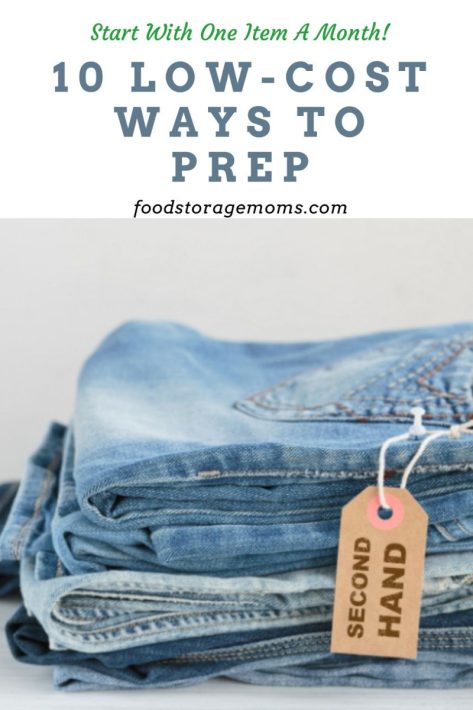
Some of My Favorite Items:
EverBrite 9-LED Flashlight 6-Pack
Low-Cost Ways to Prep
People often tell me they don’t have the finances to make emergency preparedness happen, and I understand where they’re coming from. Maybe this sounds like your current situation. Prepping can seem costly, but that doesn’t mean you should give up on the idea.
Prepping on a tight budget may be tougher, but it is possible, and I’d love to show you how. Here are 10 low-cost ways to prep when your money is tight. When your budget allows, I highly recommend some WaterBricks. They are stackable, and if your bed frame is high enough, you can put some under your bed out of sight.
Don’t Prep While on a Shopping Spree
Something that I’d encourage you not to do is to head out and buy everything all at once or make the mistake of waiting until it’s too late and the natural disaster is already knocking at your door. Prepping is all about being patient while finding the best deals.
Do your research ahead of time instead of heading to the store or going online while trying to get everything all at once. Yes, this will require many trips over time, but you’ll save a bunch of money by taking your time, shopping for the lowest prices, and not buying things you don’t need.
Prioritize What’s Important
When starting with prepping, you must prioritize everything based on your emergency plan. Think short-term. Don’t get caught up buying the cool survival gear that should come much later for when you’re planning to “bug out.”
Prepping for disasters is not cheap, so buy the things that matter the most first. This includes gathering enough food and water for everyone in your family to last you for at least 72 hours. Think about what you’ll need for shelter, clothing, and ways of cooking your meals.
Ask For It
Have family or loved ones ever asked you what you want for your birthday or Christmas every year? If so, now’s the perfect opportunity to ask them for survival gear and other prepping equipment without having to feel bad or end up with something that you’ll never use or didn’t want in the first place.
Add Prepping to Your Budget
Since prepping should be considered a long-term goal, why not add it to your budget? You might think you don’t have any wiggle room in your budget for budget-friendly prepping items, but I’d be willing to bet otherwise.
You’d have to be willing to make a few sacrifices along the way, whether it’s with your weekend entertainment or how often your family eats out each week. Consider all the other areas in your budget that aren’t necessities where you could cut back.
In a disaster situation, grocery stores are often closed or hard to get to. As part of your emergency plan, you need to consider what foods your family likes, when is the most cost-effective time of year to purchase your food storage, and how best to store items. These considerations make your grocery list and grocery shopping before the disaster a natural step to effective prepping.
Buy In Bulk While Going Generic
When it comes to your food supplies, there are several different methods that you can use, and they are all lower-cost. I’d encourage you to shop in bulk when you have a larger family.
- Though you’ll pay more upfront with just one visit, you’ll pay much less over time. You can buy large bags of rice and dried beans for only a few pennies a pound. They’re both filling and contain the protein your family needs.
- Shopping for generic foods is also not the wrong way to go. Yes, there may be a few times when generic is not priced as you’d like, but in most cases, it’s comparable to the national brands when you pick up the right product. You’ll also have another advantage of paying less for generic food when you can purchase things in bulk.
- Budget meal prep is a goal we should all strive for as part of our disaster meal planning. Consider discounts by buying store brands, cut coupons from the newspaper, weekly mail flyers, and other sources. By essential items like soups, stews, canned foods like fruits, vegetables, and meats.
- Buy shelf-stable items like grains, pasta, rice, sugar, honey, spices, and other items you’ll need as ingredients in disaster-based recipes. You want your meal dishes to be healthy and tasty, so buy things that tend to stay fresh longer.
Shop for Non-perishable Foods at Food Banks
This one may require some of you to swallow your pride to even step foot in one of these stores, but food banks are an extremely cheap way (even accessible for those who qualify) to stock up on canned goods and other non-perishable food items. Just remember to rotate your stock at least once a year so you’re not stuck with spoiled food when you need it the most.
Hit Up the Dollar Store
As a prepper, you can save hundreds of dollars by heading to your local dollar stores for several prepping needs. After all, there’s no need to buy something more expensive in retail stores when a dollar store item could just as easily be used in the same way when a disaster hits.
Why would you spend much money on something you’ll only use once, or maybe never?
You can find first aid supplies, medicines (pain relief, allergy medicine, etc.), flashlights, and personal hygiene supplies (hand sanitizer, baby wipes, shampoo, soap, toothpaste, etc.) at a dollar store. When you visit, you may even come across rain ponchos, t-shirts, socks, and underwear. Even though they may seem to be of lesser quality, dollar stores sometimes have small hardware items, such as hammers, blades, screws, washers, and other cheap items that will more than serve their purposes.
Don’t Forget Your Local Thrift Shops
Thrift shops are another great place to look when preparing for disasters on a budget. There’s nothing wrong with purchasing items that have barely been used and where you’ll only wind up spending a fraction of the cost compared to buying brand new.
You can track down flashlights, lanterns, rain and winter gear, clothing, blankets, medical supplies, sleeping bags, camping gear, tools, and cooking ware. The list goes on and on, but you’ll need to be patient and be willing to visit several times to find what you’re looking for.
Stay Warm with Space Technology
The everyday typical blanket at any retail store will run you around $10-$30. But when you have several members in your family, that can quickly add up. Why not use these emergency space blankets you can find for free or under $4? They use your body’s heat to keep you warm during an emergency.
Don’t Go Skimpy on Your Drinking Water
While you may be looking for ways to save money on all your other prepping needs, your drinking water shouldn’t be one of them. You don’t want to be left drinking contaminated water that can make you and your family sick.
Water is arguably the most critical item you’ll need. So, whether you buy several cases of bottled water or purchase a handful of portable water filters that can be used on any water source, don’t wait until after the disaster has struck. Your tap water may no longer be drinkable. Bottles like these are great as well. I have several. Filtered Bottles
To be safe, you should consider buying a water filtering system that can be used when you’re unsure of the water source’s quality. I’ve mentioned before, I like Big Berkey and PortaWell water filtering systems and have both. Big Berkey units rely on gravity to pull the water through their filters. They work great, but it can take some time for much volume. The PortaWell units have a battery-powered pump and can generate 60 gallons of filtered water per hour. An option available is the use of solar panels to recharge the battery if your power is out.
Final Word
Prepping for disasters does cost a bit of money, but with extra planning and patience, you’ll be able to cut those costs by over half while using some of my budgeting tips. However, I don’t want to lead you astray. You don’t want to go cheap on some items regarding your survival gear. For instance, you have to be willing to pay a little extra for good-quality sleeping bags so that your family is not freezing outside during the night. What other low-cost ways of saving money when prepping that you’ve encountered? May God Bless this world, Linda.
Copyright Images: Small Town Thrift Shop AdobeStock_42713813 by smp928s, Thrift Store Stack of Blue Jeans AdobeStock_582822072 By Svittlana

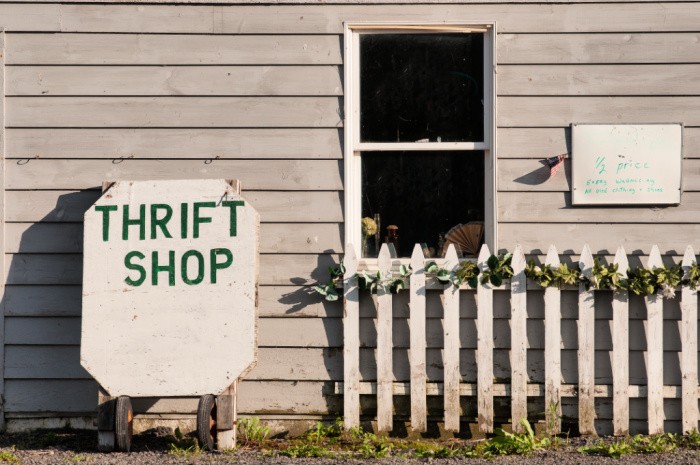

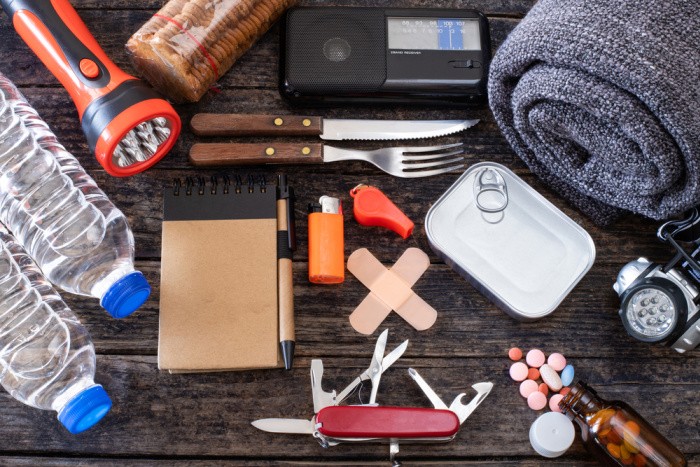
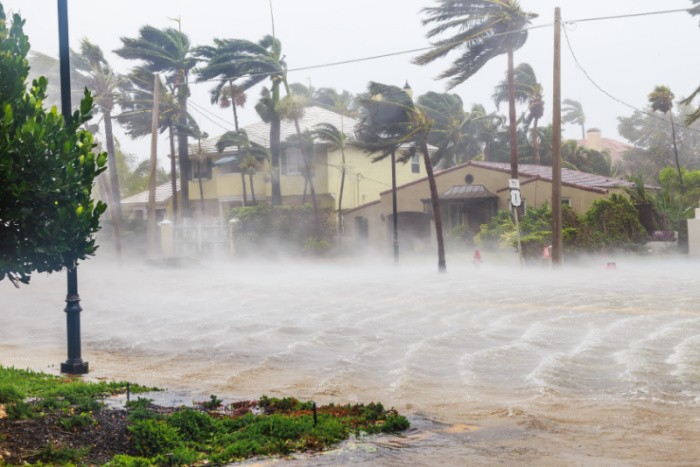
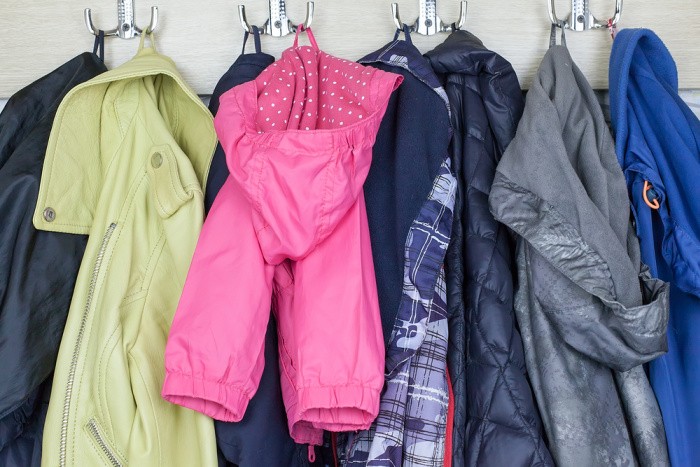
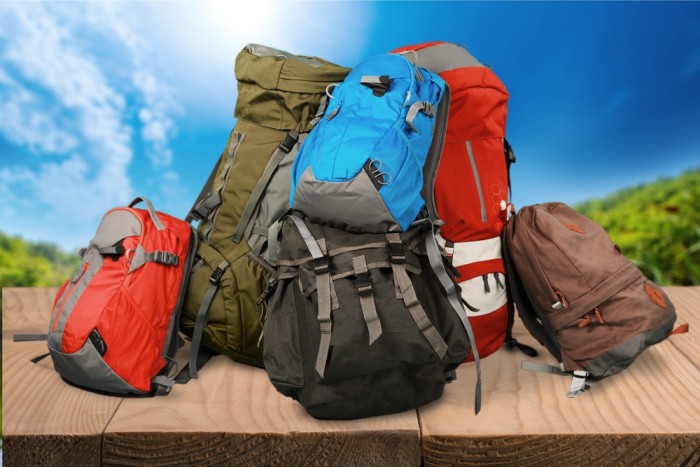

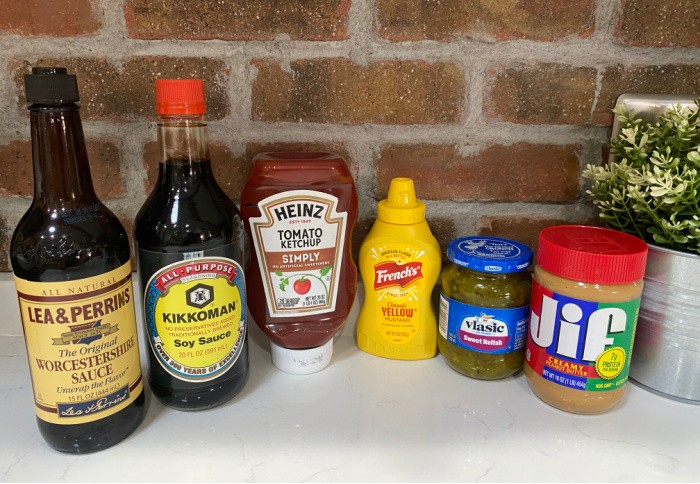

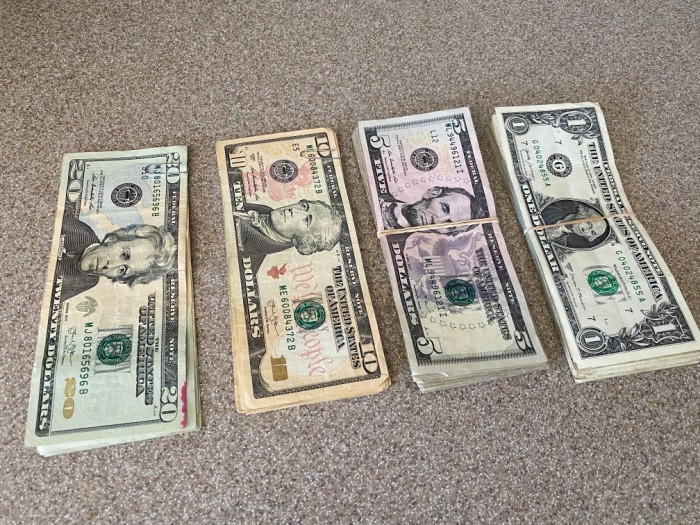

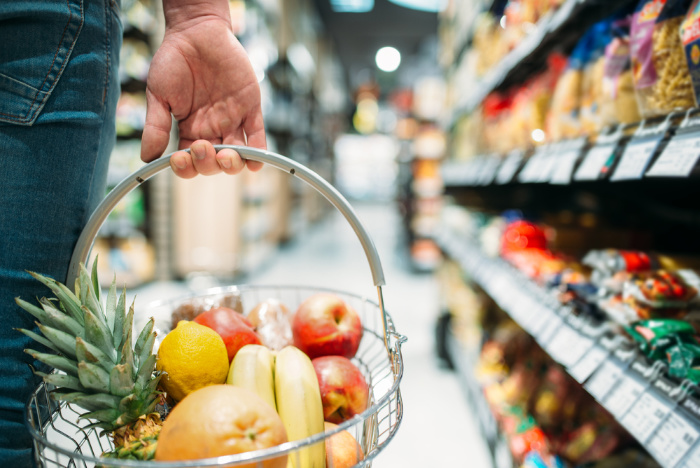
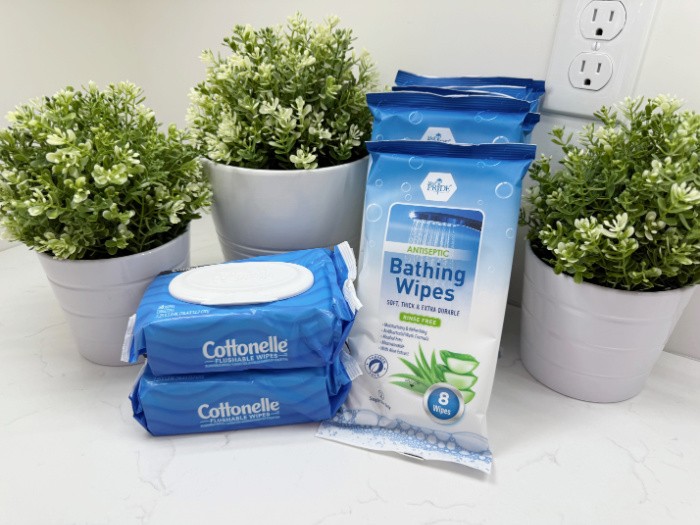





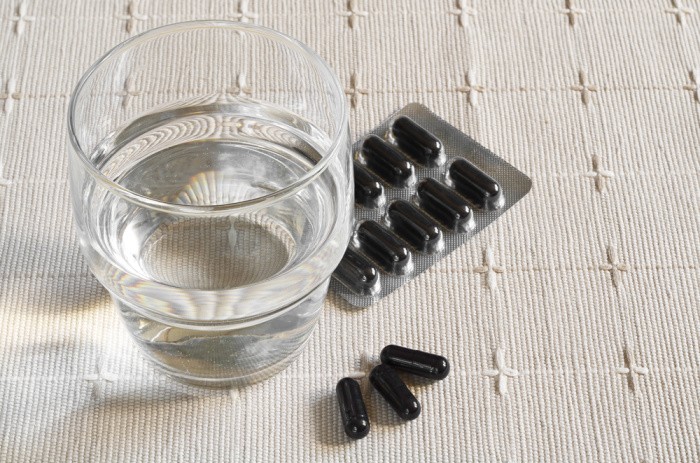
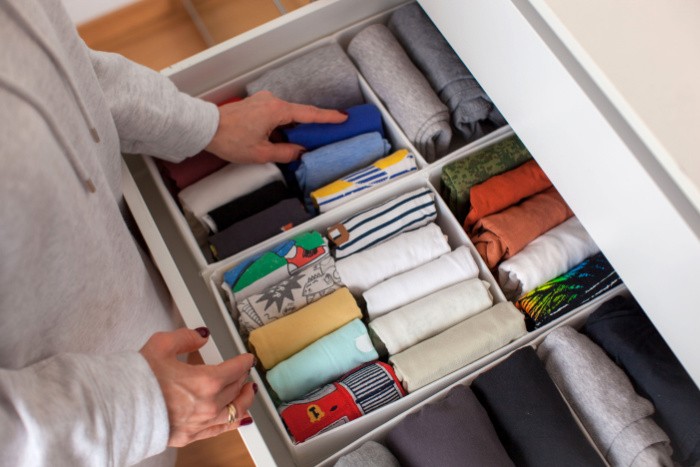

Great post, Linda ~
Another way to incorporate prepping in an already stressed budget is to just pick up one or two extra things at the grocery store each trip – especially things that are on sale. I still do this each shopping trip. I especially look for those items that are 10 for $10 or buy one get one free or half off, that sort of thing. I have enough pasta, rice and beans to last for 6+ months because I do this.
Also, remind people that to make the most of the dollars they are going to spend on prepping is to make a plan, write it down. I used the menu plan when I first started by making a menu plan for 1 week and shopping for that week but getting 2 of everything non-perishable. Then I made up a second week menu and did the same thing. It was a bit tough on my budget in the very beginning but after 2 weeks, I had 2 weeks of non-perishables on the shelf. I continued that until I had several months worth of non-perishables. It was like insurance for me to have that much in my pantry. But, by the time a couple or three months went by, it was more a habit to purchase extra each shopping trip.
As for other tangible items, I did what you suggested and asked for bigger ticket items as gifts. I also planned my budget to include saving for the more expensive things. Sometimes it took me several months to save the money to get, say water bricks, but I made it work for me.
Biggest thing I think I can caution people with is to NOT USE CREDIT CARDS to purchase prepping items unless they can pay those cards off as soon as the bill comes in. Using CCs will further stress the budget with interest and longer term pay off.
Hi Leanne, my local church asked me to take ten minutes (not much you can do in ten minutes but, oh well) yesterday to talk about Food Storage. I gave them my printout “Where Do I Start” Food Storage List. It does just what you talked about. Make a plan for a week, then another week, and so on. Before you know it, you have a great pantry or a home grocery store. We are truly blessed, Leanne. Linda
Hi Linda, great post as usual! If you are prepping with beans,rice pasta etc… People really need to think about the extra amounts of water it takes to soak, boil and process these foods. I love to use broth to cook rice and beans. Like you, we boil all the bones from prior meals to make homemade broth. (Yum-we freeze for future use) My daughter had bone in ham for Thanksgiving which I absconded with the bone to make ham and bean soup!
On a side note… Have you ever tried Argentine Red shrimp? Tastes very much like Lobster!
Hi Bill, oh my gosh, we have been eating my bean and ham soup for three days! It’s like a FREE meal, and so yummy! I agree with you on the beans. I buy dry beans as well as beans in cans ready to open. NOW, I have got to look into that Argentine Red Shrimp!!! Oh my gosh, I love hearing this! Thank you! Linda
This evening I went to a local discount grocery store looking for some affordable food storage preps. It’s the type of store ya never know what they’re going to have – it’s like a treasure hunt. 🙂
Given the price & lack of availability of #10 can foods lately, I was shocked to see 3 #10 cans of Auguson Farms buttermilk pancake mix. The cans, lids, etc are in perfect shape. The use by date is 2030. Best part? They only cost $1.50 each! SCORE!!! 🙂
Hi Amy, oh my gosh! That is a bargain!! Squeal! Linda
Yes! I felt like a kid on Christmas morning!
Hi Amy, I would too!! Linda
Oh my – I think that people starting now to prepare are going to have a tough time with the prices rising so much. I think a lot of people only think about food storage and not about other items needed for surviving. I am going to a rummage sale tomorrow and I will be looking at things people are selling and things they probably should be keeping!! Their loss-my gain!!!
I have a couple of big-ticket items on my wish list that I am saving for! So I made a plan at the beginning of October to only go to the grocery store for perishables! I decided to eat out of my fridge and freezer! NOTE: I only have the freezer that is part of the fridge so not a whole lot of food in there but enough for me. I can say now at the end of a month of eating this way, I was able to save enough to purchase more water bricks and a Mr Buddy heater. Next big-ticket item is a larger generator. That will take a bit more time to save up though.
I am always on the lookout for prepping items. I have started thinking out of the box a bit. If I find something that I think I need, I do a little mental exercise – what is its original purpose? then on to – what else can I use it for? It has made me try to figure out multiple uses for some pretty simple things!!
Hi Leanne, yay for more WaterBricks and the Mr. Buddy heater. I was so glad when I got mine!! I don;t need anything right now but I’m still looking for my butane stove. We have gone through 99% of the boxes, but unpacking is not fun. We’re getting there, though. I would love a generator! The main house is plumbed and wired for one but not my small home. Linda
We have an executive account with Costco so we get 2 rebate checks each year; one in November, one in March. I use those checks to stock up on our supplies or for something I wouldn’t normally have the extra cash for. It may not seem practical to some people, but it works for us. We’re too old to “bug out” so we plan on staying in our house as long as 1) it’s practical and 2) it’s still standing! That reminds me, it’s time to check our bugout bags to see if they’re up to date enough.
If push comes to shove, I can stock up on chocolate (but it does staledate) and barter for other necessities. People will always want chocolate, right???
Hi Robbie, LOL! Of course people will want chocolate!! LOL! I’ve had the Executive Costco card for years but I only get one check a year! I love it because it always pays for my membership and then some extra cash. Where you live must be different, you live in a lucky state! I just went to Sam’s Club and got some Members Mark D batteries for some new Bushnell Lanterns I bought. Harry told me about the Plus membership, it’s awesome. This election has made me double check preps, and stock up on snacks for election night…..I wish people would vote early so we didn’t have to wait to see who wins. Linda
We have the Costco VISA card. It’s the only credit card we have and we faithfully pay it off in full each month. That’s where we get the second check; one is from Costco and the other is from VISA. It’s worked really well for us as we use it for gas and groceries plus incidentals. I will admit tho, I tend to overspend with it rather than having a strict budget with cash or checks for groceries. Costco just has such good items at times! I do like Sam’s Club alot, too. We go there for specific items that Costco doesn’t carry.
Hi Robbie, oh gotcha, I have a credit that earns $$$ as well. I never thought about getting one from Costco. We have one for travel, which is limited these days! LOL! I like both stores for different items. They are less than a mile apart which is awesome. Great tip! Linda